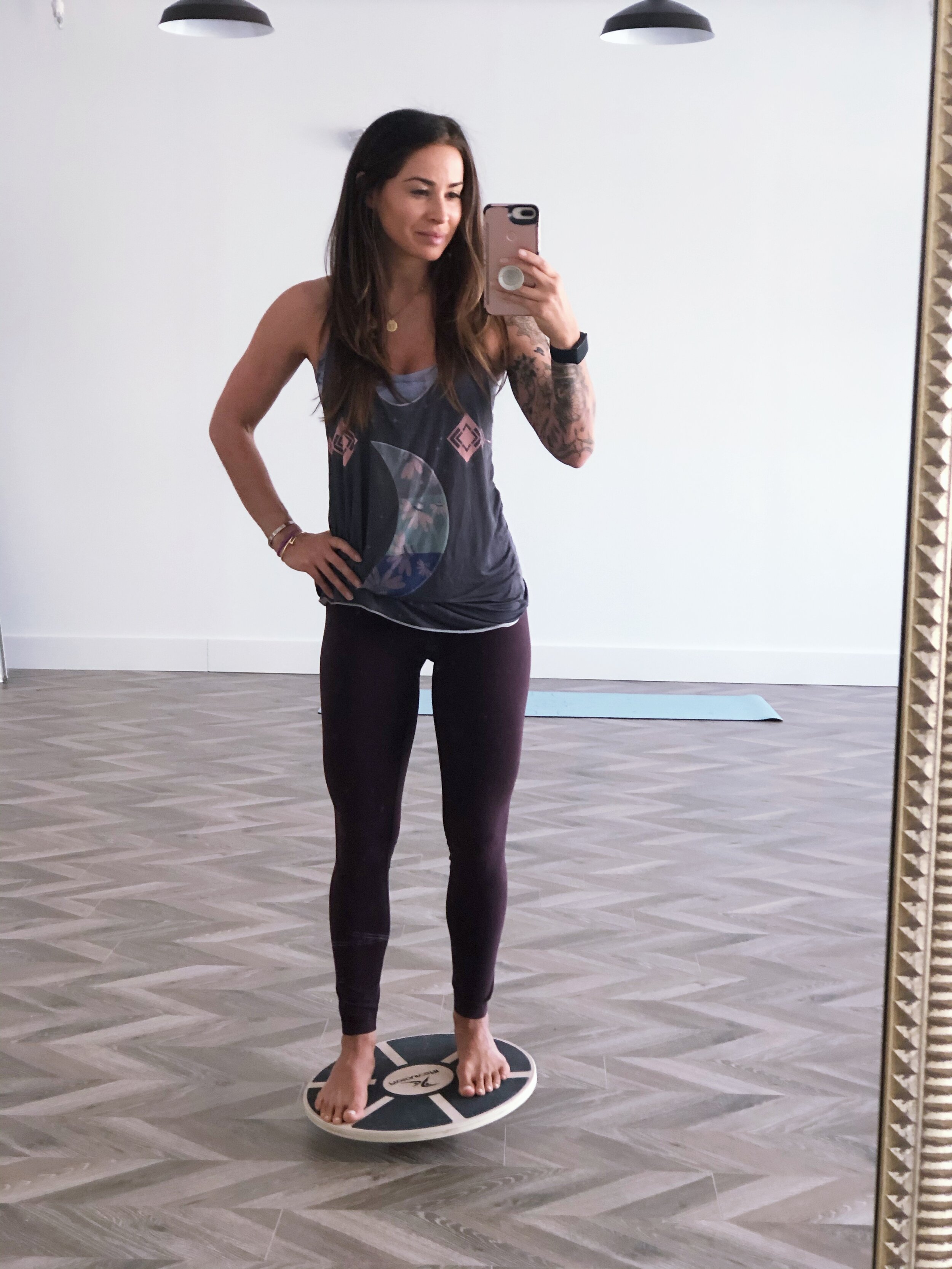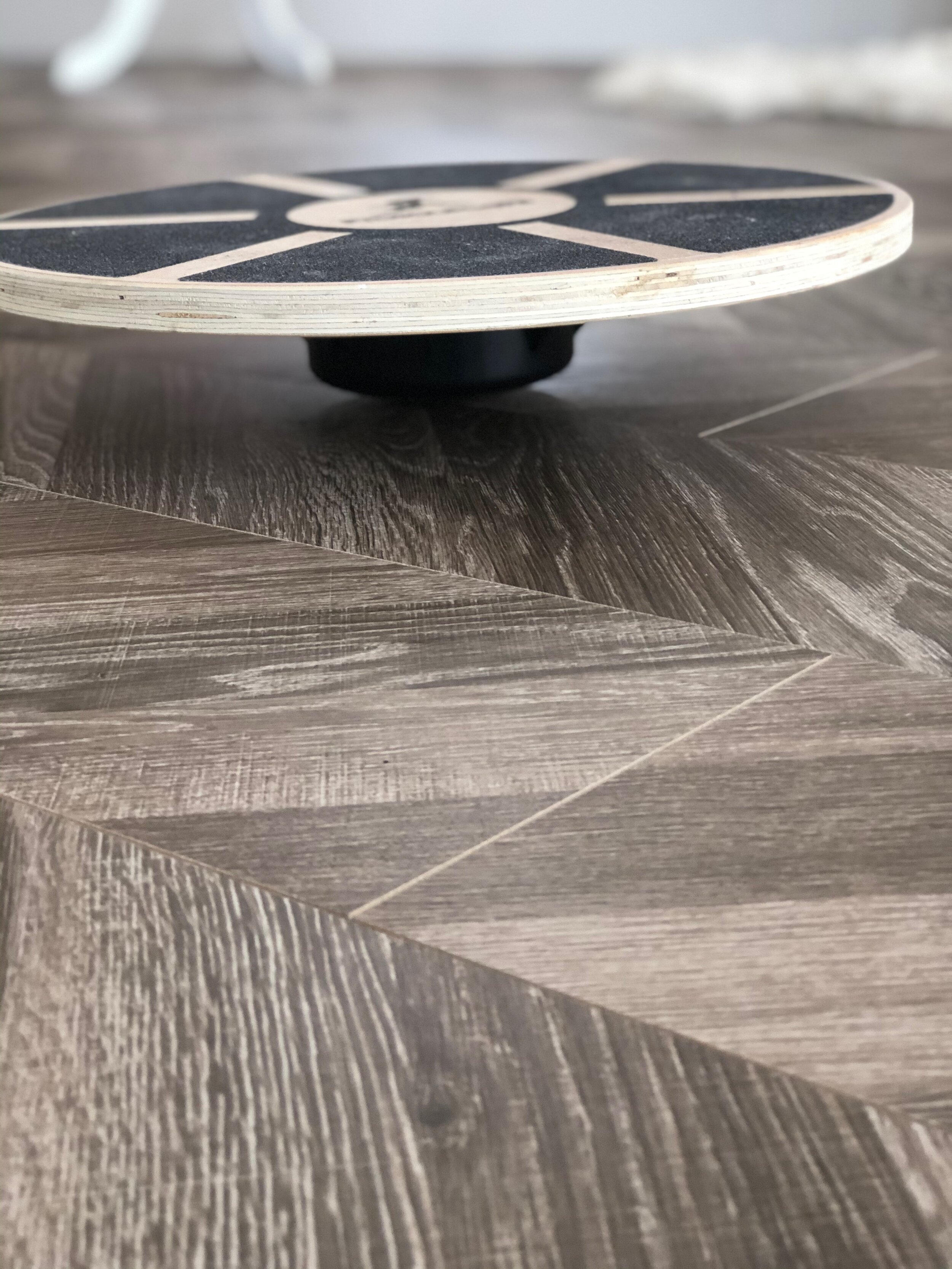Disclaimer: This post contains affiliate links which means YBC® will earn a small commission if you happen to make a purchase. Thanks for the support.
Before I started my personal training certification program, balance training wasn’t on my radar. In fact, the only thing I really thought about balance was that there was a dedicated section for it in typical vinyasa yoga classes, and that’s about it. Now, I know better. Balance is incredibly important. Equal and proper weight distribution across the feet is important because the entire body is connected, so when weight distribution is off, it can negatively impact knees, hips, low back, and shoulders, if you can believe it. So, when I got this wobble board, I started thinking of creative ways I could train my balance.
Through my personal training certification, I learned that a true comprehensive workout should include balance training, especially for people just starting out with working out, and for those rehabbing various injuries. Balance training is so important because it tests the intrinsic core stabilizing muscles, and therefore helps create stability in foundational movements. Having a good sense of balance is essentially one of the foundational pillars before progressing into more challenging movements.
There’s static balance, like handstands or standing on one leg, and then there’s dynamic balancing, like the ability to transition smoothly from warrior two to half moon, or the functional ability to be moving quickly and change direction under various conditions without falling. Balance is dependent upon both internal factors (think: core stabilizers) and external factors (think: the surface you’re on). And just because you can balance well on one foot on a hardwood floor doesn’t mean you’ll be able to do the same thing on a thick padded exercise mat - it’s important to switch things up to keep your body continually developing.
wobble board - Use code YBC10 for 10% off
Balance, like most everything else in working design, should be progressive. Balance training should stress your balance threshold. That is, you don’t want it to be so easy that you don’t feel like you’re having to work to keep yourself balanced, but you also don’t want the balancing exercise to be so challenging that you can’t even hold it for a second or two. Balance should also be worked in all planes of motion and in a proprioceptively challenging environment (that is, switch up the surface you’re on and the movements you’re performing).
So what would a typical progression be like?
Well, one of the things you could focus on is body positioning. Two legs on a stable surface like the regular floor, and then single leg exercises on the floor. So, for example, you could do biceps curls standing up. This is, believe it or not, a balancing exercise. Then, if that’s doable with ease, you could progress to a single leg biceps curl. Then, you might want to change the surface. So you could go from a single leg on the floor exercise to both legs on an unstable surface like a foam pad or a wobble board (use code YBC10 for 10% off). You may even want to try it without the biceps curls because just learning to balance your bodyweight on the wobble board might be enough of a challenge. Once you master that, add in the biceps curl. Then progress to a one leg bodyweight balance. Then once you master that, you could add in the biceps curls if you wanted. And you can even progress from there! There are so many ways to train balance, but I just wanted to kick off the discussion here because I think it’s something most of us don’t take into account, but it’s extremely important for preventing injury, helping to support the ankles, knees, hips and low back.
Let us know in the comments if you practice any creative ways of training balance, or tag us on social media using the hashtag #ybcyogis to show us your balancing skills on a fun prop or different surface!



